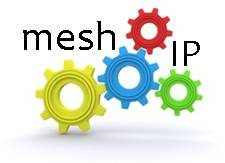 No doubt you are seeing more and more information about the value of moving IT services “into the Cloud.” But do you know exactly what that means? Does anyone? Before moving into the world of Cloud computing you must first gain a holistic view of your current IT environment and future business objectives. This way you will have a better understanding of the current realities and future possibilities available to your organization in the Cloud. Your decision process should look much like a typical sourcing strategy process, with some special handling of cloud-related issues. Remember: one size does not fit all when it comes to determining your unique Cloud sourcing strategy.
No doubt you are seeing more and more information about the value of moving IT services “into the Cloud.” But do you know exactly what that means? Does anyone? Before moving into the world of Cloud computing you must first gain a holistic view of your current IT environment and future business objectives. This way you will have a better understanding of the current realities and future possibilities available to your organization in the Cloud. Your decision process should look much like a typical sourcing strategy process, with some special handling of cloud-related issues. Remember: one size does not fit all when it comes to determining your unique Cloud sourcing strategy.
So what exactly is the Cloud and why is it receiving so much attention these days? There are many definitions and explanations being floated around, but one of the better ones that we use at Alsbridge comes from the National Institute of Standards and Technology (NIST) which states that Cloud is, “A model for enabling convenient, on-demand network access to a shared pool of configurable computing resources (e.g., networks, servers, storage, applications, and services) that can be rapidly provisioned and released with minimal management effort or service provider interaction.” Cloud services are categorized according to the purpose and intent of the services provided. Typically these categories are classified as:
* IaaS (Infrastructure as a Service) – Virtualized servers, storage and network capability
* PaaS (Platform as a Service) – Operating systems, development platforms and middleware
* SaaS (Software as a Service) – Applications delivered over the internet (previously referred to as ASP – Applications Services Providers)
Furthermore, Cloud services can also be classified as:
* Public Cloud – Services made available to everyone over the internet
* Private Cloud – Privately owned with services made available behind a firewall to a restricted set of users
* Hybrid Cloud – Interoperable combination of public and private clouds
Depending on your specific IT environment and business objectives, certain portions of your current environment may be candidates to move into some combination of cloud computing environments. Some typical candidates for movement into the cloud include email (such as Gmail), customer relationship management (such as Salesforce.com), and applications with wide variances in resource requirements, where you can avoid building an internal dedicated infrastructure that is built to service the peaks in resource needs.
As noted in a previous article, The Five Ws for Developing and Executing a Sourcing Strategy, “Developing and executing an IT sourcing strategy can be a daunting task. With the advent of Cloud computing, the number of vendors and technical platforms to consider is increasing, which makes it even more important that you follow a defined, structured and proven process to evaluate your options and alternatives.” (July 2010, Outsourcing Leadership)
While it is easier in most cases to contract for specific Cloud services (in some cases as easy as agreeing the terms and conditions posted online by checking a couple of boxes), Cloud computing is actually driving additional complexity into the IT and vendor management space due to multiple providers each supplying niche pieces of your overall infrastructure. The challenge is developing an overall sourcing strategy which allows you to bring each type of IT service into the overall IT environment, ensuring each piece functions as needed to seamlessly support your business.”
In general, the process you use to develop your IT sourcing strategy should address a key set of questions including:
* WHY are you considering sourcing certain services to a third-party provider?
* WHAT are you considering sourcing?
* WHEN are you considering sourcing?
* WHO will you outsource to?
* WHERE will services be delivered from?
* HOW will you transition services and manage the contract(s) and provider(s)?
These same questions also can be used to define the subset of your IT activities that may make sense to move to the cloud:
* WHY are you considering the cloud? As you think about the potential savings, make sure you also think about additional cost and complexity you must build into your current organization to manage those services and to manage the integration of these services into your environment.
* WHAT are you considering moving to the cloud? You will need to assess each application and infrastructure component of your portfolio to determine what may make sense to move. Consider the risks associated with transition, ongoing operations, security, regulatory compliance and audit compliance.
* WHEN are you considering sourcing? The good news is that cloud services in general are easy to stand up and require less lead time than moving to more traditional environments.
* WHO will you outsource to? In the cloud computing world, there are a multitude of vendors, many of whom are focused on one particular type of cloud service (IaaS, PaaS, or SaaS). Also, traditional outsourcing providers such as IBM, HP and Accenture are starting to build a stronger presence in the cloud services market.
* WHERE will services be delivered from? While the theory of cloud computing should make it location independent, the reality is that many clients still have a strong vested interest in understanding where services are provided from. Concerns may be related to performance, business continuity, government regulations, or a whole host of other reasons. Make sure you understand any location constraints you have prior to considering specific vendors.
* HOW will you transition services and manage the contract(s) and provider(s)? The bulk of transition efforts to the Cloud will consist of converting and moving data into the new environment and the organizational changes required to train users on how to fulfill business processes using new technical solutions. While managing an individual Cloud service agreement is normally simpler than managing a traditional outsourcing contract, your challenge will be how to manage multiple contracts, handoffs, and end-to-end service levels across a multitude of providers and technical environments.
As you consider moving services to the Cloud, keep in mind that you must offset the hype and sales promises bombarding you with a common sense, business-oriented approach that leads you to the best sourcing strategy for your organization. By analyzing your current environment, assessing different provider and technology options, defining alternatives, and building a business cases based on a full understanding of the cost involved, you will develop a rational sourcing strategy that meets your current and future business objectives. When options and alternatives are unclear, consider piloting Cloud services, as it can be done at relatively low cost and low risk. Engage a sourcing advisor to help you and your team to consider your unique circumstances and create a roadmap to sourcing the right services to the right providers and the right price and terms.
- The Customer Edge Drives the Need for NaaS - June 25, 2023
- Blockchain Evolves And Secures - January 13, 2019
- Bessemer Ventures’ 2018 Cloud Computing Trends - February 25, 2018




